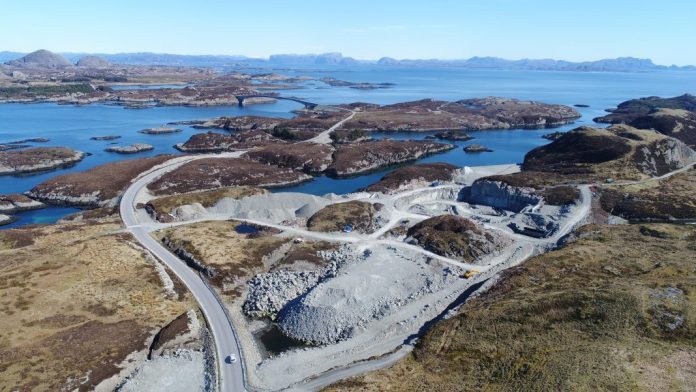New Oslo Stock Exchange candidate is betting all the way west at sea.
It has been six years since the company was founded, and an application for a licence for land-based farming was submitted. Bulandet Miljøfisk has long since been granted a licence, has raised money, and is in full swing to plan out industrial land.
With EUR 15 million in equity and EUR 6.3 million in loans and grants, the company has secured sufficient funding for the first stage of construction, including a pilot facility. The facility is being built as far west as possible in Norway, in the archipelago of Bulandet, hence the name Bulandet Miljøfisk.
- Read more: Revolutionary French 120m long salmon farming ship provided inspiration for this land-based project

Throughput
The chairman of the board of the company is Knut Eikeland, who has a vast amount of experience from his time at Norway Seafarms and Pan Fish, as well as being the founder of aquaculture software company Mercatus and chairman of microbrewery Kinn Bryggeri. Former regional director of the Directorate of Fisheries Hans Haddal is CEO.
They are betting on a “flowthrough concept” with intake pipes of 400m, which draws clean and temperate seawater from the north side of the facility. This will fill the fish tanks before the water is cleaned and pumped into the sea south of the site.

What they call the “Bulandet model sea to sea” is not dissimilar to what two listed players already have under construction.
“Andfjord and Salmon Evolution have similar concepts,” Eikeland told SalmonBusiness. “There is limited investor interest in RAS in Norway today. They would rather build closer to the market,” explained Eikeland.
Check out SB’s new industry report for land-based salmon farming HERE.
Post-smolt
“We envisage that we will get to 2022 before we have the first fish in the plant. We will be good at producing postmolt in the pilot first,” said Hans Haddal. “Here we have a cooperation with Landøy Fiskeoppdrett,” he added.
Initially, they are aiming for a production of 1,000-2,000 tonnes of post-smolt at the pilot facility. The next stage of construction is an additional 4,500 tonnes of salmon. This can then be developed up to 15,000 tonnes.
Funding is needed for that, of course.
Like other land-based fish farming companies, raising capital is being considered to be made over the stock exchange.

List
“We have that plan in the strategy, with the listing. We have a partnership with Norne Securities, and also talk to other facilitators,” said Eikeland, referring to several SB articles where relevant stock exchange candidates within this segment have been ramped up.
“We will probably be relevant on that list,” said Eikeland, adding that the company already has investors such as Jakob Hatteland and Karstein Gjersvik, both of whom have invested in other land-based salmon farming concepts.
Bulandet Miljøfisk has close ties to Helgeland Miljøfisk, Aquaculture Innovation and the Torgnes family, which has also started their land-based salmon farm plans. In addition, they have agreements with Aga Linde on oxygen, equipment manufacturer Brimer and fish health specialist Akvahub. In the latter company, Hans Haddal is an entrepreneur.


